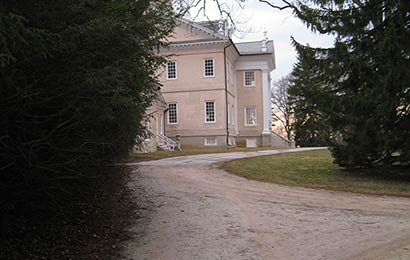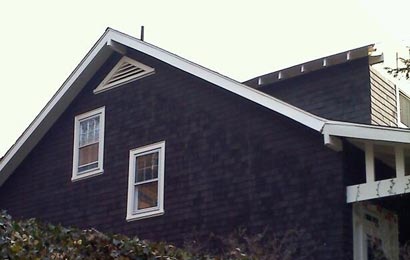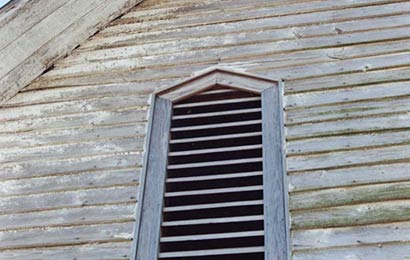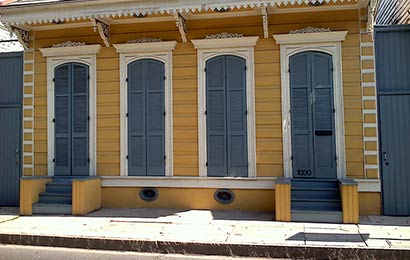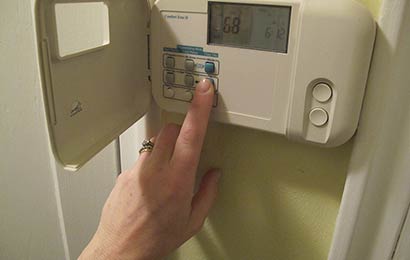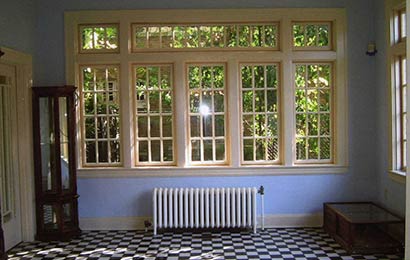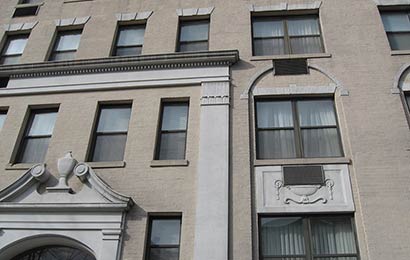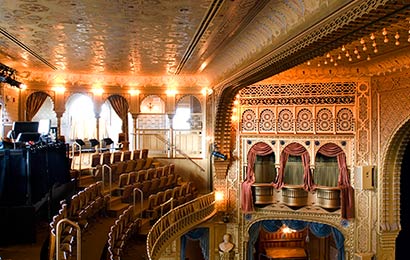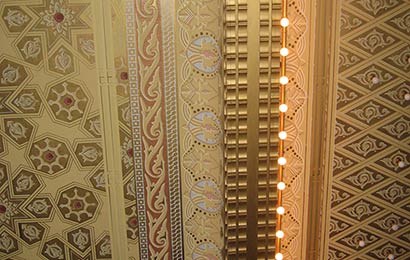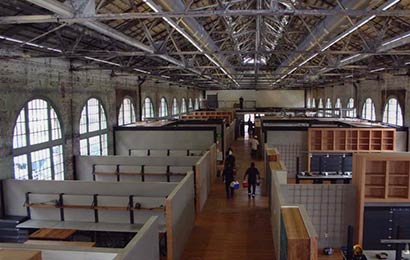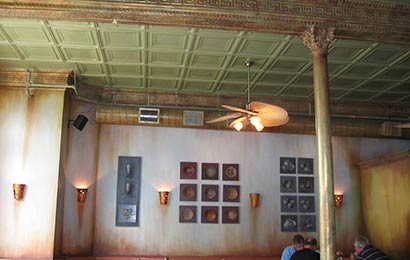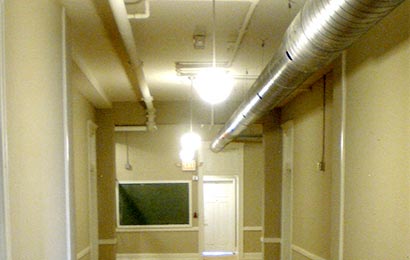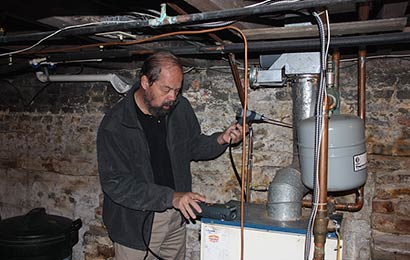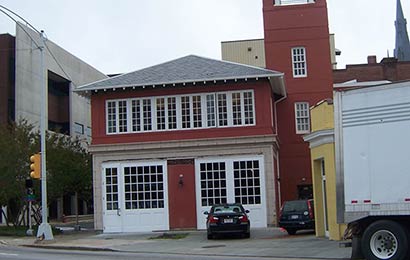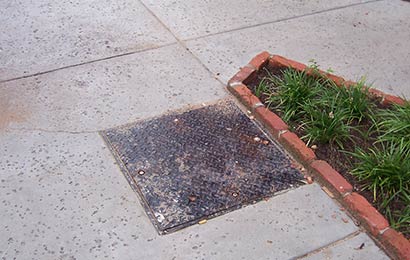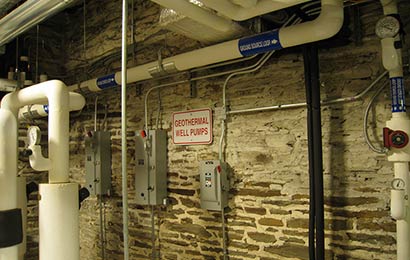THE SECRETARY OF THE
INTERIOR’S STANDARDS FOR
REHABILITATION &
ILLUSTRATED
GUIDELINES ON
SUSTAINABILITY
FOR REHABILITATING
HISTORIC BUILDINGS
Heating, Ventilating and Air
Conditioning (HVAC)
and Air Circulation
Recommended
Not Recommended
Retaining and maintaining functional and efficient HVAC systems.
Replacing existing HVAC systems without testing their efficiency first.
Upgrading existing HVAC systems to increase efficiency and performance within normal replacement cycles.
Replacing HVAC systems prematurely when existing systems are operating efficiently.
Installing an energy-efficient system that takes into account whole building performance and retains the historic character of the building and site when a new HVAC system is necessary.
Installing an inefficient HVAC system or installing a new system based on pre-retrofit building performance when a smaller system may be more appropriate.
Supplementing the efficiency of HVAC systems with less energy-intensive measures, such as programmable thermostats, attic and ceiling fans, louvers and vents, where appropriate.
Retaining or installing high efficiency, ductless air conditioners when appropriate, which may be a more sensitive approach than installing a new, ducted, central air-conditioning system that may damage historic building material.
Installing through-the-wall air conditioners, which damages historic material and negatively impacts the building’s historic character.
Installing a central HVAC system in a manner that damages historic building material.
Installing new mechanical ductwork sensitively or using a mini-duct system, so that ducts are not visible from the exterior and do not adversely impact the historic character of the interior space.
Installing new mechanical ductwork that is visible from the exterior or adversely impacts the historic character of the interior space.
Leaving interior ductwork exposed where appropriate, such as in industrial spaces, or when concealing the ductwork would destroy historic fabric.
Leaving interior ductwork exposed in highly-finished spaces where it would negatively impact the historic character of the space.
Leaving interior ductwork exposed and painting it, when concealing it would negatively impact historic fabric, such as a historic pressed metal ceiling.
Leaving exposed ductwork unpainted in finished interior spaces, such as those with a pressed metal ceiling.
Placing HVAC equipment where it will operate effectively and efficiently and be minimally visible and will not negatively impact the historic character of the building or its site.
Placing HVAC equipment in highly-visible locations on the roof or on the site where it will negatively impact the historic character of the building or its site.
Commissioning or examining the performance of the HVAC system and continuing to examine it regularly to ensure that it is operating efficiently.
Installing a new HVAC system without commissioning or testing its efficiency after installation.
Investigating whether a geothermal heat pump will enhance the heating and cooling efficiency of the building before installing one.
Installing a geothermal heat pump without evidence that it will improve the heating and cooling efficiency of the building.
Installing a geothermal system where there is a significant landscape or where there are archeological resources that could be damaged.



